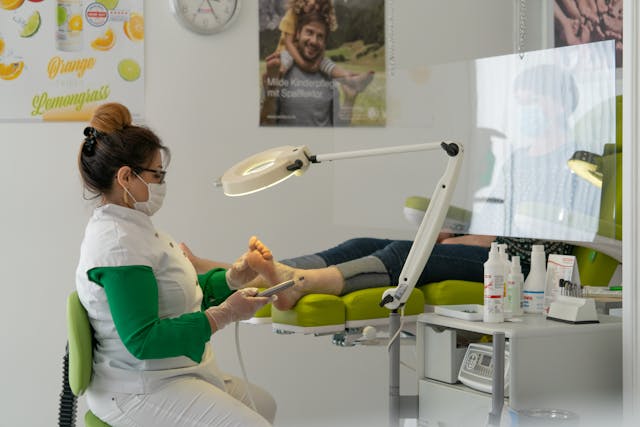Foot injuries can disrupt daily activities and impact overall mobility. Podiatrists use modern techniques to address various conditions, aiming to improve recovery and maintain functionality. From advancements in diagnostics to innovative surgical options, these developments showcase how technology is shaping foot care.
Advancements in Foot Injury Diagnosis
Accurate diagnosis is pivotal for effective treatment. Many podiatrists use advanced imaging tools, such as digital X-rays and MRIs, to assess foot injuries more precisely. These technologies allow for a detailed evaluation of bones, soft tissues, and joints, identifying problems that may not be visible through traditional methods.
Pressure mapping systems are another tool frequently employed in podiatry practices. These systems analyze pressure distribution and gait, offering insights into issues such as improper foot alignment or overpronation. The data helps tailor personalized treatment plans for patients.
Minimally Invasive Procedures
Minimally invasive techniques have gained attention for their benefits, including smaller incisions and shorter recovery times. These procedures are often used to treat conditions like bunions, heel pain, and ligament injuries. Advanced tools and imaging technology guide these precise interventions while minimizing tissue disruption.
Podiatrists also use advanced suturing methods to address injuries like torn tendons or ligaments. These approaches aim to maintain the foot’s structure and stability while supporting quicker healing. For many patients, minimally invasive procedures also reduce the likelihood of scarring.
Regenerative Medicine in Foot Care
Regenerative medicine has introduced new approaches to managing foot injuries. Platelet-rich plasma (PRP) therapy is one method where a patient’s platelets are used to promote healing. This technique has been applied in cases of chronic tendon injuries and arthritis, offering an option for patients looking to avoid extended downtime.
Stem cell therapy is another emerging treatment being incorporated into foot care. These cells promote tissue regeneration and enhance recovery for conditions like plantar fasciitis or Achilles tendon injuries. While research continues to explore the full benefits, such therapies provide promising avenues for care.
Laser and Shockwave Therapy
Lasers are increasingly used in podiatric care due to their precision and versatility. They can help reduce inflammation, manage pain, and address fungal infections. Laser treatment often requires minimal recovery time and is well-suited for outpatient care.
Shockwave therapy is another treatment gaining momentum. This method uses sound waves to stimulate blood flow and tissue repair. It has been applied in conditions like heel pain and tendon issues, where stimulation helps improve the healing process.
Surgical Innovations
Surgery remains an option for more complex foot injuries. Advances in surgical tools and materials have improved outcomes and recovery times. Techniques such as arthroscopy allow podiatrists to perform corrections using small incisions and cameras, reducing strain on surrounding tissues.
Custom surgical implants are also finding their way into practice. These are specifically designed for a patient’s unique anatomy, helping to provide a better fit and functionality. This personalized approach often contributes to better post-surgical outcomes and long-term results.
Visit a Podiatrist
The range of treatments now available makes podiatry more effective than ever. Modern tools and techniques improve diagnosis, treatment, and recovery for those with foot injuries. Whether exploring regenerative medicine, minimally invasive options, or advanced imaging, consulting a skilled podiatrist is the best first step. Book an appointment today to learn how innovative strategies can address your foot care needs.

